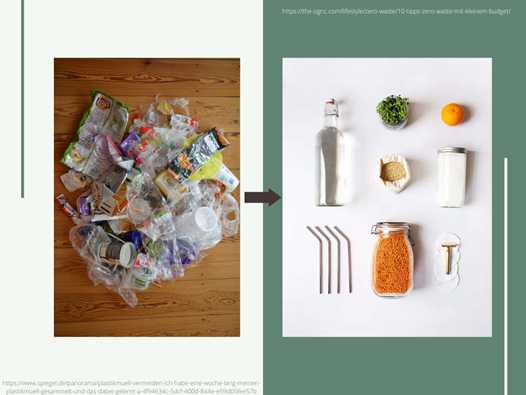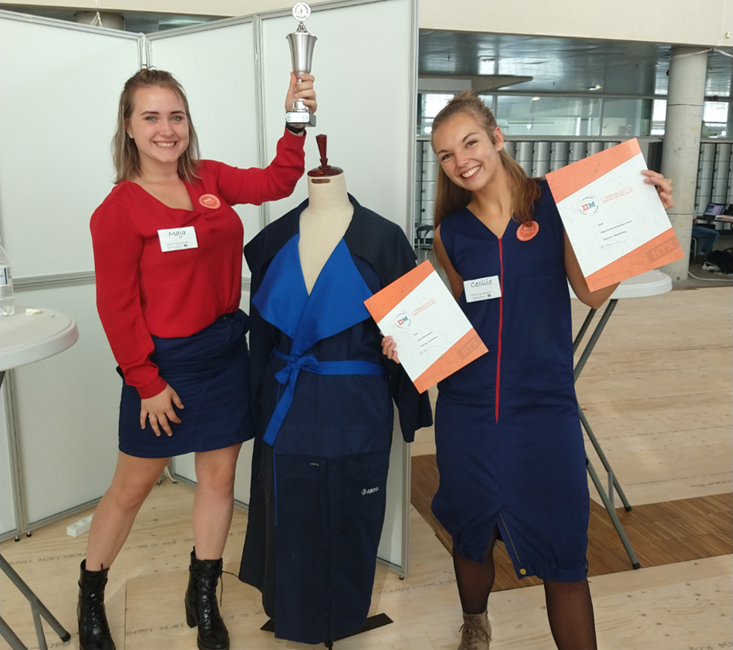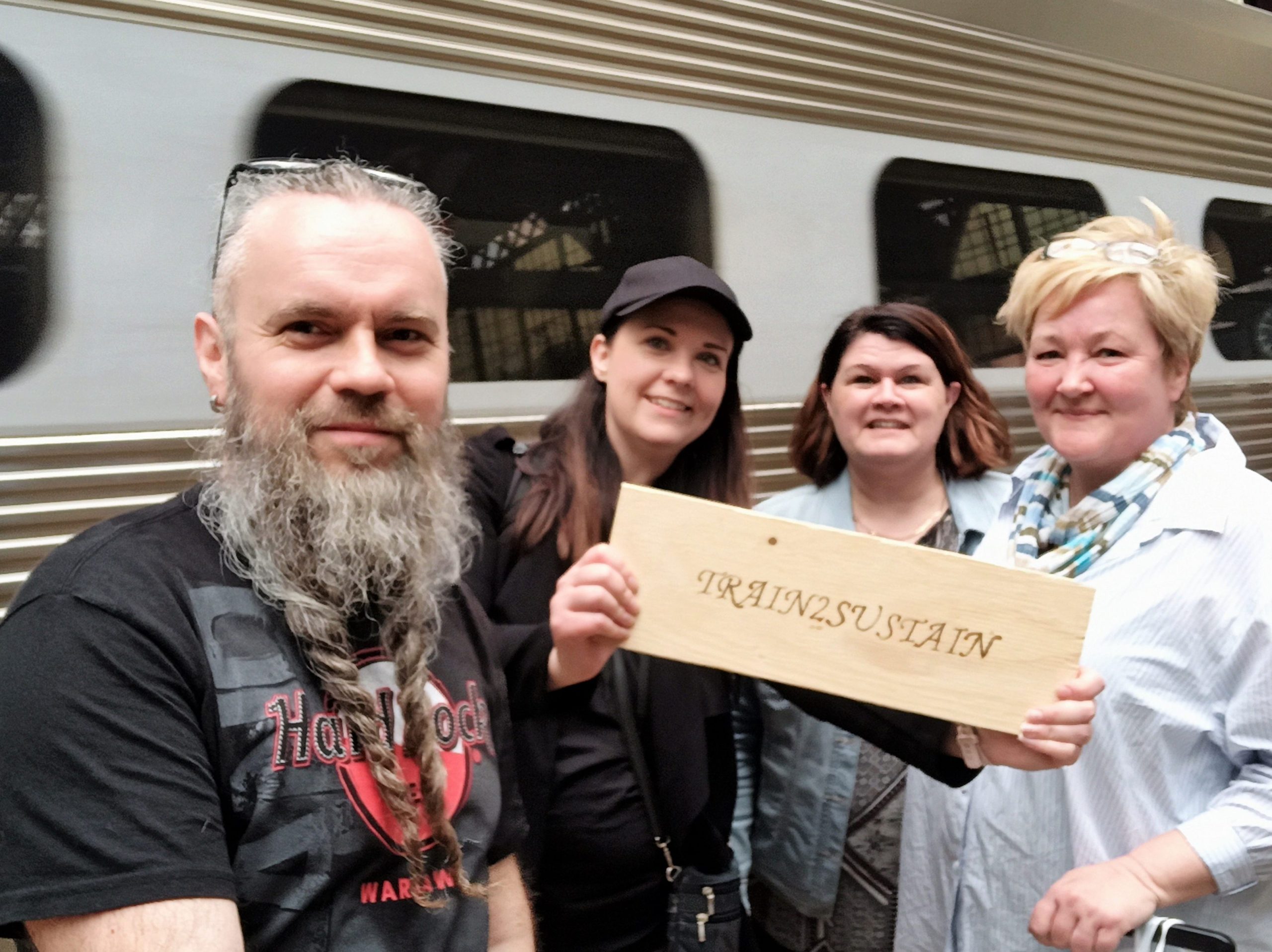
Different ways to travel
What is sustainable travelling?
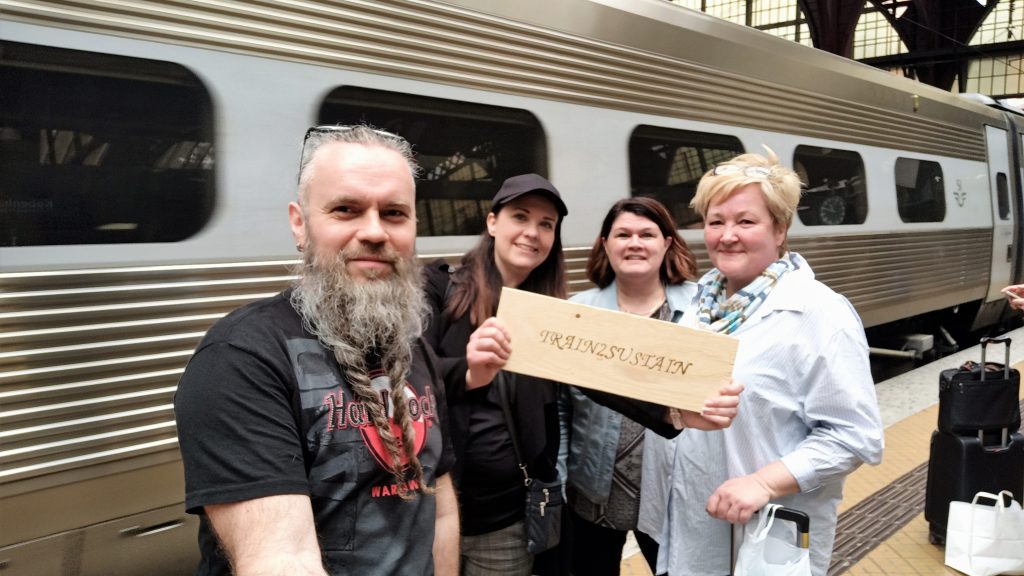
Sustainable travelling is not just minimizing your carbon footprint choosing the most ecological transport. “Sustainable tourism is all about achieving a balance between economic growth, human well-being and environmental health. It focuses on reducing the negative impacts of tourism and on maximizing the positive benefits for communities, cultures, ecosystems, and the planet.”
https://sustainabletravel.org/top-10-tips-for-sustainable-travel/
We decided to find out the difference between travelling the traditional way or doing it in a sustainble manner. Our experiment was carried out during the trips to and from our project meeting in Sønderborg, Denmark.
Trip from Vaasa to Sønderborg and back
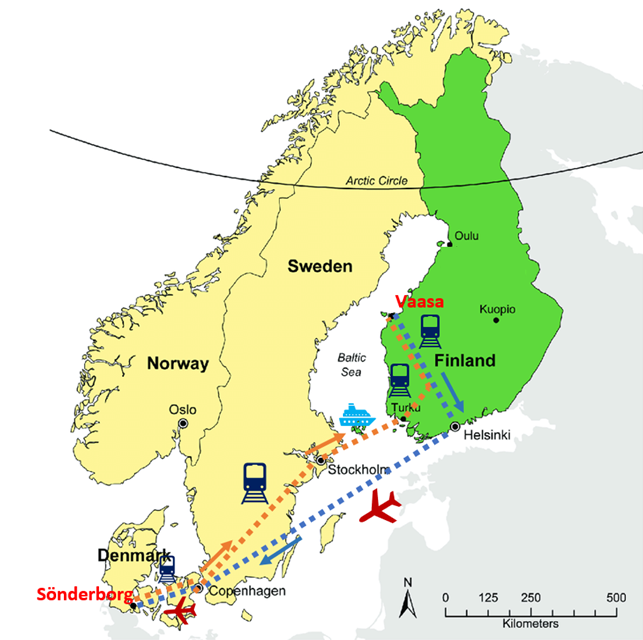
Carbon footprint calculations for travelling the traditional way
from Vaasa to Sønderborg
Starting time 10:34
We travelled with train from Vaasa to Helsinki and the carbon emission was 0 kg. If this travel had been done by plane the carbon dioxide emissions would be 99 kg per person.
The carbon emission for one person flying from Helsinki to Copenhagen with Finnair is 247 kg.
The carbon emission for one person flying from Copenhagen to Sønderborg with Alsie Express is 100 kg.
Arrival time 18:45
Total hours 8 h 10 min
Total amount of carbon emission for one person is 347 kg.
Total amount for four persons is 1388 kg.
With that total amount of 1388 kg, one person could heat the household water for over 5 years .
If also the travel from Vaasa to Helsinki had been done with airplane the total amount of carbon emission for four people had been 1784 kg.
Carbon emissions was calculated with this calculator: https://www.atmosfair.de/en/offset/flight/
Sustainable travel from Sönderborg to Vaasa
Starting time 17:35 19.5.2022
The carbon emission for one person travelling:
by train from Sönderborg to Copenhagen is 0,574 kg.
by train from Copenhagen to Stockholm is 0-10 kg.
by ship from Stockholm to Turku with Viking Grace is 8 kg per person.
by train from Turku to Vaasa carbon emissions is 0 kg.
The train goes on electricity that has been produced in a renewable way.
They compensate the emissions from their operations through a Gold Standard-certified voluntary emissions trading project.

Arrival time 13:38 21.5.2022
Total hours 44 h 3 min
Total amount for one person 10,6-18,6 kg.
Total amount for four person 34,3-74,4 kg.
Of course travelling ecologically makes a huge impact on your carbon footprint. But if you really want to make an effort in making your travelling greener you have to consider at least these things:
Food
It takes longer time travelling by train and ship than by plane. This means that you will consume more food outside your home. Your choice of food will make an impact on your carbon footprint from the trip. Will you choose endangered tuna, crawfish on the buffet, hamburger beefs from south america or an ecological wrap from a shop?
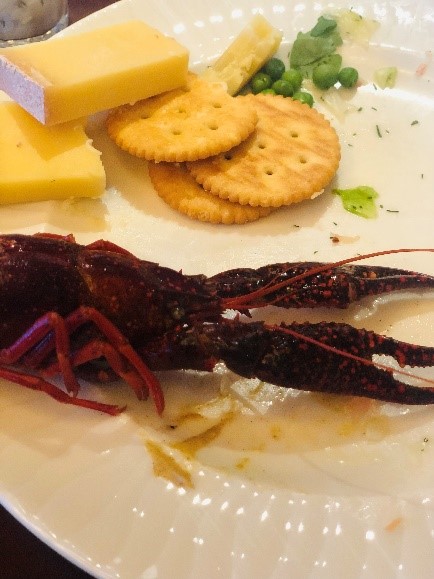
Crawfish
VS
ecological wrap
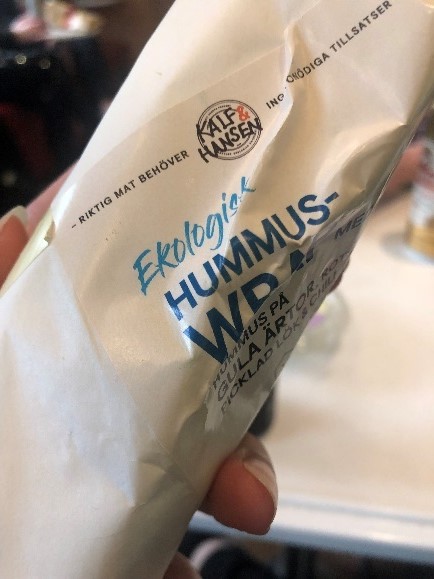
Did you know that the Carbon footprint is high for crawfish ? About 5,6 kg of carbon dioxide per kilogram while the footprint for an ecological wrap is under 0,5 kg.
Managing waste
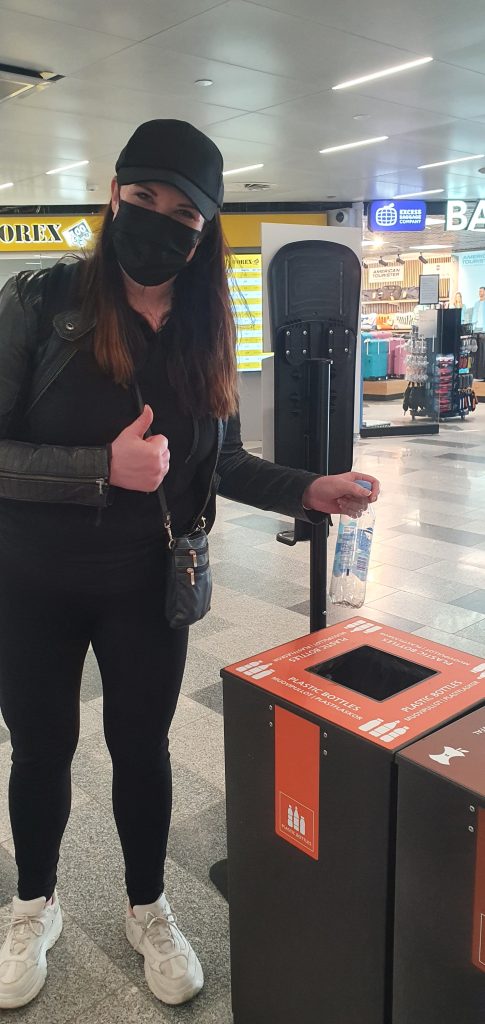
Here is a tip!
To avoid single use plastic, take your own water bottle with you. In some countries you can safely drink the tap water. You save money and the nature. Buying snacks and food when travelling can produce a lot of waste. Remember to recycle them in a proper way. During our trip we realised that there are good possibilities for recycling garbage at the airport, on train stations, at the train, on the ship and in the hotels.
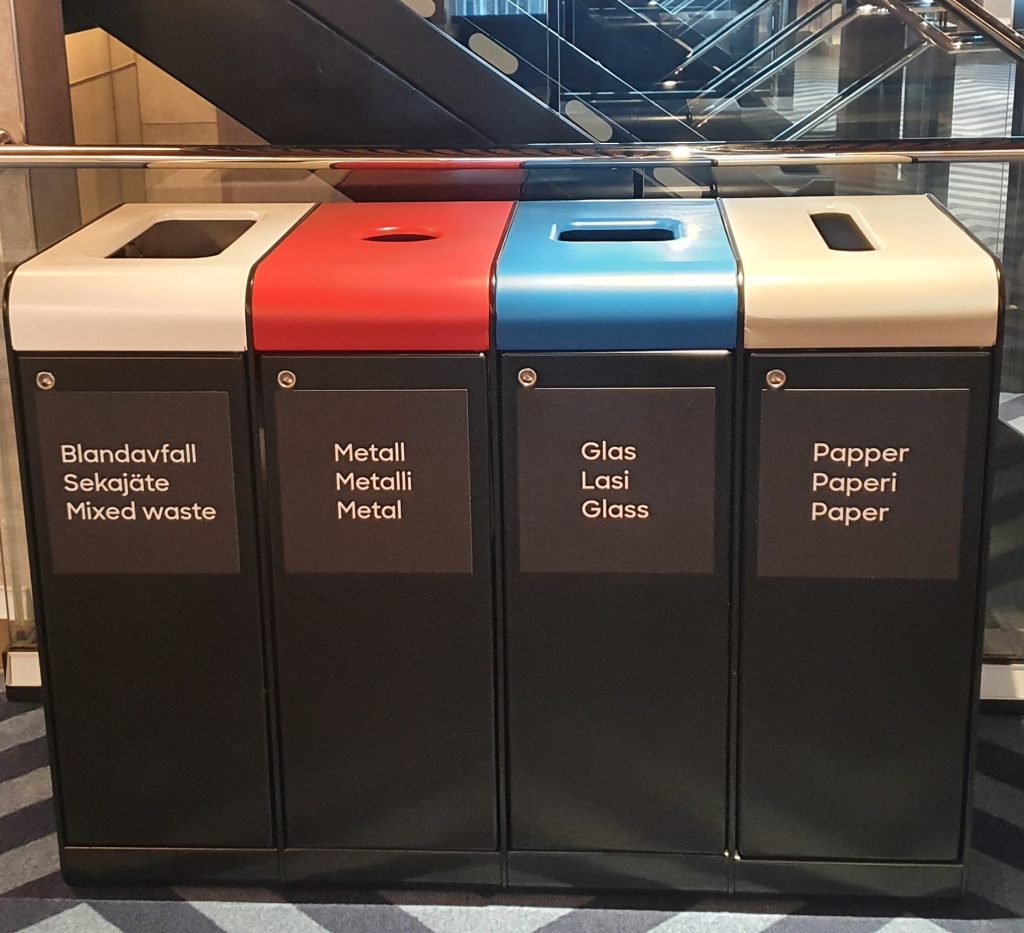
Accommodation
Choose sustainable accommodations.
Just remember that some companies declare that they are sustainable, but they really are not. Follow the hotels directions about cleaning.
Switch of the electricity when you leave the room, deny cleaning and changing of sheets and towels if not necessary, take short showers instead of a bath.
Take the stairs instead of the elevator.
Ten tips for sustainable travelling:
https://sustainabletravel.org/top-10-tips-for-sustainable-travel/
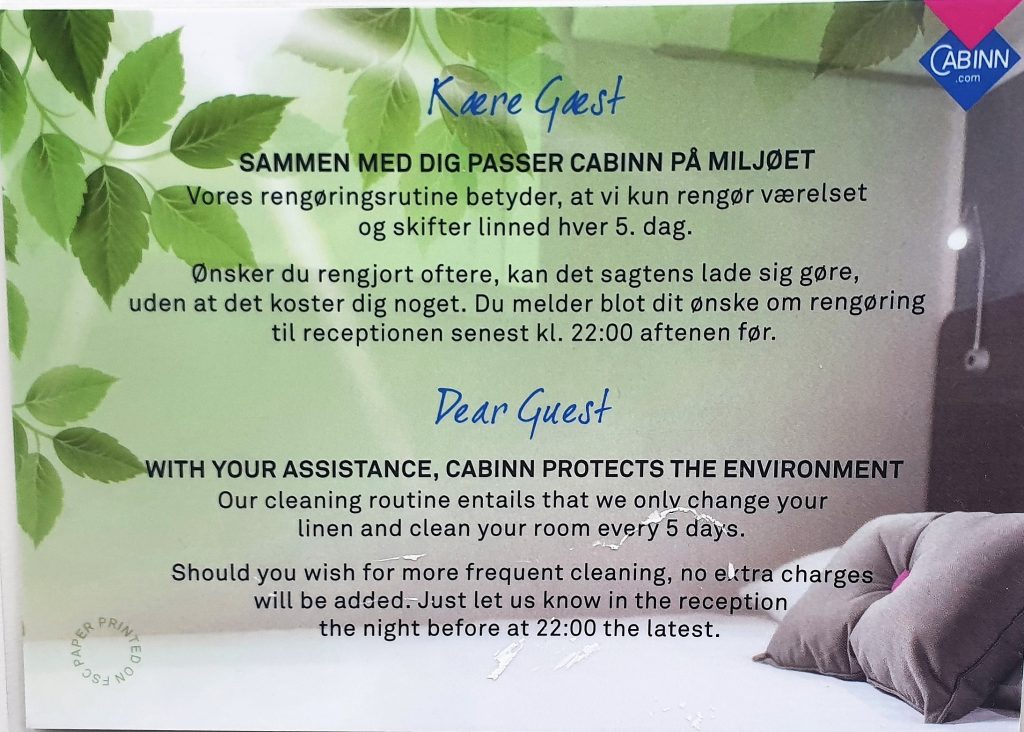
Travelling with train and boat we saved a lot of carbon dioxide emissions but what did we think were the pros and cons of travelling sustainably.
| Pros | Cons |
| Reduction in air pollution not just carbon dioxide | Takes more time |
| Smaller carbon dioxide emission | Takes more planning |
| Gives you extra time to rest or work | If you want to work in the train, you have to prepare for the fact, that there is poor or no internet connection at all |
| There is more time to chat with fellow travellers | It is sometimes more expensive.It is sometimes more expensive. Not only the travelling tickets but also the time consumption that leads to higher costs. You may need more hotel nights and you spend more money on food. |
| Sitting in a train is more comfortable than in small airplane and you can for a walk if you like | |
| Sustainable travel makes you feel good | It is more tiring, and you can miss your destination if you fall asleep |
This experiment was eye-opening for us. The biggest surprise was how much carbon dioxide you can save on travelling green if you make sustainable choices during the trip. This was a positive experience for us and when we had set us up for a longer travel time than usually it was a fun adventure. If nothing else our way of travel gave a good topic for conversation. Some admired our way of travelling while some thought we are crazy choosing 44h of travel instead of 8 hours. However, when we encourage our students to green travelling it is important to remember security issues and that there is a higher risk of delays and other unexpected things when you have many connections.
But if you ask us – when ever you have time, courage and it makes sense choose the green way to travel.
“Take the Train2Sustain”
Links about green travelling:
https://esn.org/news/sustainable-travel-priority-new-erasmus-programme
https://www.sitra.fi/blogit/pelasta-maailma-lomallasi-ja-tule-hulluksi-pelastuslaskelmia-tehdessasi (Finnish blog)
Article by:

from left to right:
Sami Peltoharju, Teacher in Business studies, Vamia, Finland
Misa Muotio, Teacher in Mathematics and Chemistry, Vamia, Finland
Susanna Pakkala, Development Manager, Vamia, Finland
Katarina Sandbacka, Manager of International affairs, Vamia, Finland
Our trip from Vaasa to Sönderborg and back

